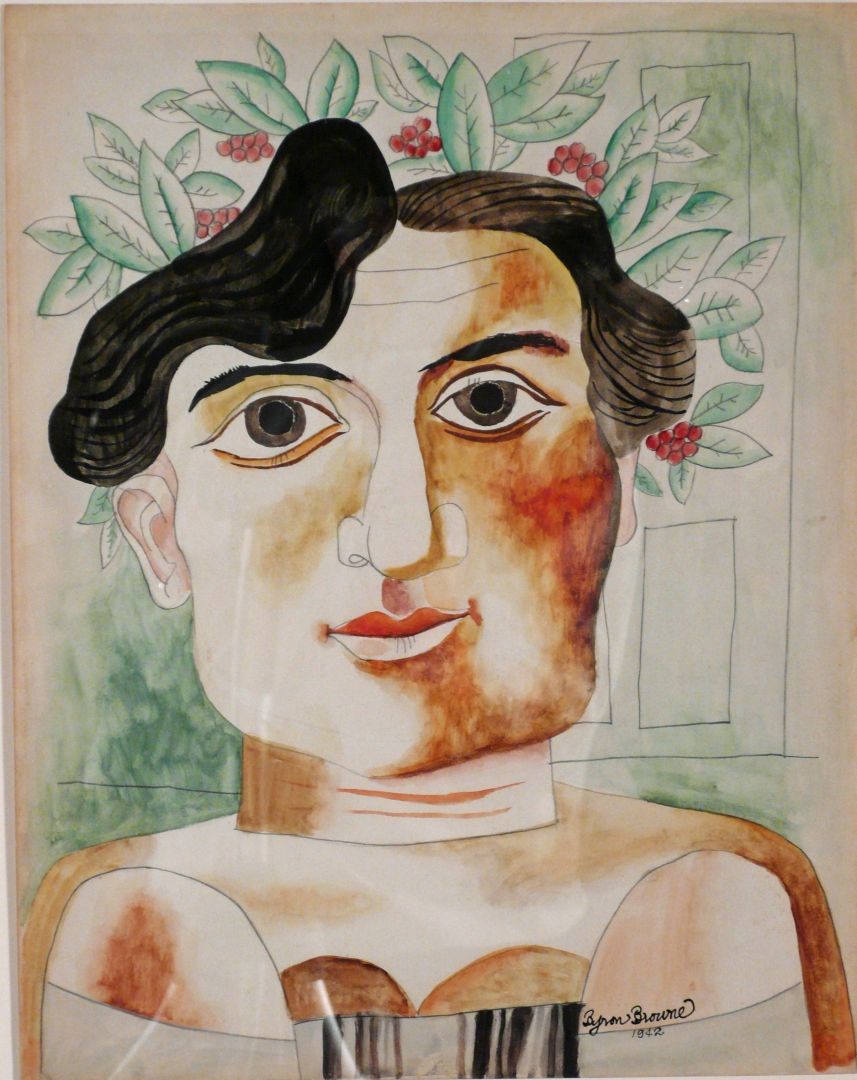Browne, Byron (American, 1907-1961). UNTITLED PORTRAIT (Self Portrait?). watercolor and pencil, 1942. Signed and dated, lower right. 14 x 11 inches. In excellent condition with the colors strong and fresh. The following is the Smithsonian Institution's Artist Biography for Browne: Byron Browne was a central figure in many of the artistic and political groups that flourished during the 1930s. He was an early member of the Artists' Union, a founding member of the American Abstract Artists, and participated in the Artists' Congress until 1940 when political infighting prompted Browne and others to form the break-away Federation of Modern Painters and Sculptors. Browne's artistic training followed traditional lines. From 1925 to 1928, he studied at the National Academy of Design, where in his last year he won the prestigious Third Hallgarten Prize for a still-life composition. Yet before finishing his studies, Browne discovered the newly established Gallery of Living Art. There and through his friends John Graham and Arshile Gorky, he became fascinated with Picasso, Braque, Miro, and other modern masters. The mid 1930s were difficult financially for Browne.(1) His work was exhibited in a number of shows, but sales were few. Relief came when Burgoyne Diller began championing abstraction within the WPA's mural division. Browne completed abstract works for Studio D at radio station WNYC, the U.S. Passport Office in Rockefeller Center, the Chronic Disease Hospital, the Williamsburg Housing Project, and the 1939 World's Fair.(2) Although Browne destroyed his early academic work shortly after leaving the National Academy, he remained steadfast in his commitment to the value of tradition, and especially to the work of Ingres.(3) Browne believed, with his friend Gorky, that every artist has to have tradition. Without tradition art is no good. Having a tradition enables you to tackle new problems with authority, with solid footing.(4)" Browne's stylistic excursions took many paths during the 1930s. His WNYC mural reflects the hard-edged Neo-plastic ideas of Diller, although a rougher Expressionism better suited his fascination for the primitive, mythical, and organic. A signer, with Harari and others, of the 1937 Art Front letter, which insisted that abstract art forms "are not separated from life," Browne admitted nature to his art-whether as an abstracted still life, a fully nonobjectiv
Follow us
Contact Us
ed@edpollackfinearts.com
Copyright © 2025 - Edward T. Pollack Fine Arts





